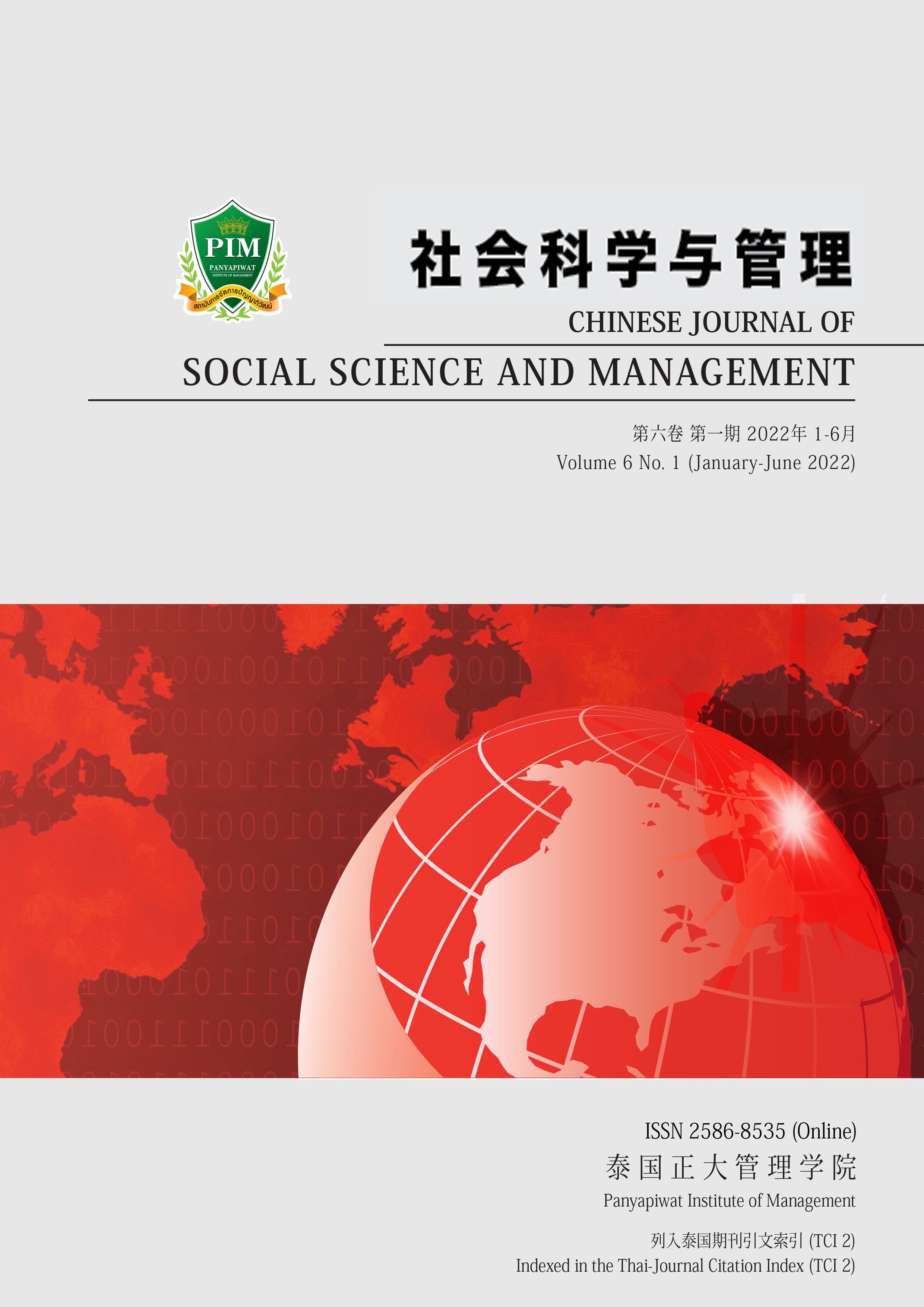THE APPLICATION OF MIND MAP MODEL OF 5W1H METHOD IN THE ONLINE LIVE TRAINING OF CHINESE READING
Main Article Content
Abstract
In studying, second language learners often encounter two problems in the process of Chinese reading. One is unable to summarize the central idea of the article; second, the correct rate of reading and answering questions is low. Therefore, teachers should suggest interesting essay topics for students,
including providing them suitable learning methods for each subject. This research was relevant to arranging the training of Chinese reading though a live method based on the 5W1H analysis with thinking maps with the objective of supporting secondary level students in finding the main points of the provided essay, as well as developing the skills of answering questions from their reading. This study had 74 students in total. After the students applied the thinking maps, they could undertake descriptive writing for the main contents and verbally brief the main ideas. The examination accounted for a total of 10 marks. The average quantitative result of pre-learning was 6.56, and post-learning was 8.77. Accordingly, this teaching method was able to increase the efficiency of Chinese reading. In addition, the standard deviation for pre-learning was 7.37, and post-learning was 4.43. From the research outcome, the regarded teaching method could reduce the level of the reading skill inequality among students.
Article Details

This work is licensed under a Creative Commons Attribution-NonCommercial-NoDerivatives 4.0 International License.
Chinese Journal of Social Science and Management Editorial Division
The Office of Research and Development, Panyapiwat Institute of Management
85/1 Moo 2, Chaengwattana Rd., Bang Talat, Pakkred, Nonthaburi 11120, Thailand
Tel. 02 855 01048 E-mail: cjssm@pim.ac.th
References
Anderson, L. W., & Krathwohl, D. R. (2001). A taxonomy for learning, teaching and assessing: A revision of bloom’s taxonomy of educational objectives. Longman.
Buntham, N. (2016). The Experiment research of mind mapping applied to Chinese characters teaching in high school of Thailand. Graduate School Journal, 9(20), 35-48. [in Chinese]
Buzan, T., Griffiths, C., & Harrison, J. (2012). Modern mind mapping for smarter thinking. The Buzan Organization Limited.
Buzan, T. (1991). Use both side of your brain. Penguin Group. Buzan, T., & Buzan, B. (1994). The mind map book: Radiant thinking. BBC Books.
Chen, X. Q., Dou, M. L., & Deng, L. L. (2020). An analytical research on the application of mind mapping in chinese reading comprehension prior course in Kashgar University for example. Modern Communication, (20), 14-16. [in Chinese]
Chen, G. X., & Tan, C. (2019). Research on intergenerational reading service in public library based on 5W1H analysis. Library Research, 49(3), 85-90. [in Chinese]
Diao, Y. (2021). Mind-map-Assisted English text analysis in universities based on CSE. Journal of Civil Aviation Flight University of China, 32(1), 76-80. [in Chinese]
Ebbinghaus, H. (1885). Memory: A contribution to experimental psychology. York University.
Huang, W., Cao, R., Qi, Y., & Zhang, S. (2019). The promotion strategy of critical thinking ability in the era of artificial intelligence-An empirical study of the application of thinking maps to the improvement of critical thinking ability of pupils . Guodian Education, (10), 102-108. [in Chinese]
Hyerle, D. (2011). Student successes with thinking maps (2nd ed.). Corwin Press.
Lasswell, H. D. (1948). The structure and function of communication in society. The Communication of Ideas, 37(1), 136-139.
Li, Y. F., & Zhang, Z. G. (2018). Basic concepts of thinking map and mind map and their applications in human anatomy teaching. Chinese Journal of Anatomy, 41(6), 735-737. [in Chinese]
Ministry of Tourism and Sports of Thailand. (2020). Tourist statistics. https://mots.go.th/more_news_new.php?cid.
Na, A. (2020). Research on application of 5W1H analysis in reading promotion of university library. Library Work and Research, (9), 89-95. [in Chinese]
Wu, X. Q. (2019). How to improve your Chinese reading comprehensive skills of Chinese vocational college students. Fu Juan Cha Ye, 41(12), 249-250. [in Chinese]
Zhu, Z. P. (2015). Language curriculum design for overseas primary and secondary schools: Taking secondary schools in Thailand for example. Journal of International Chinese Teaching, (2), 18-25. [in Chinese]


